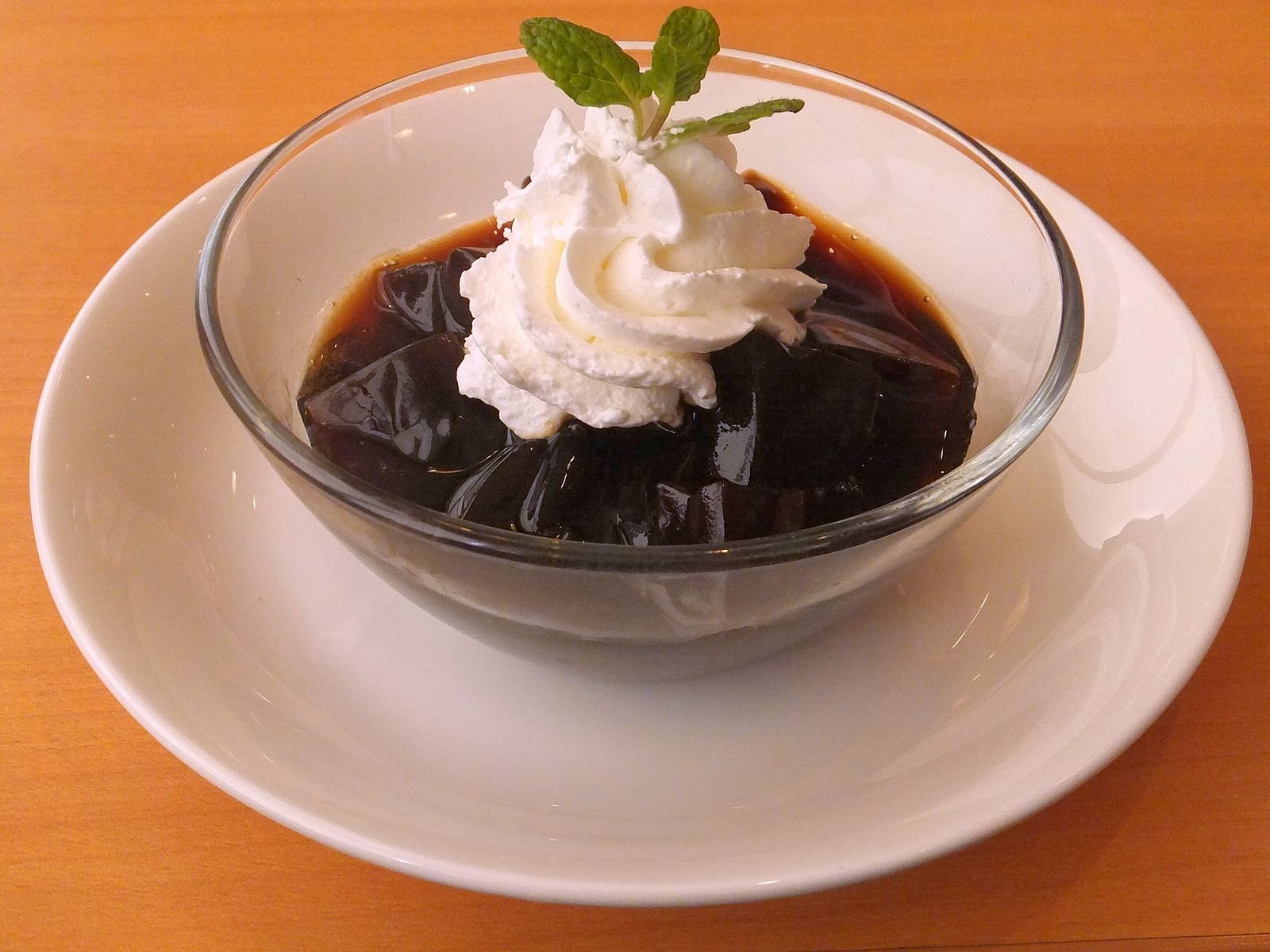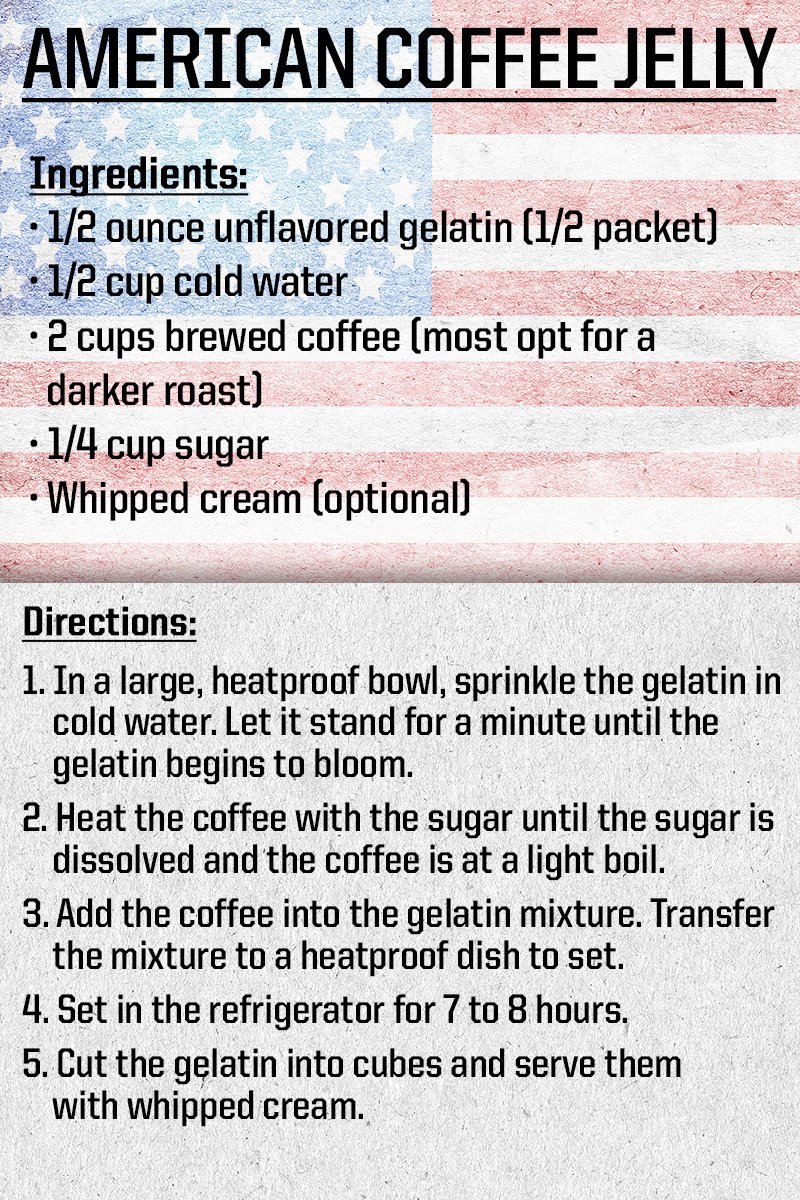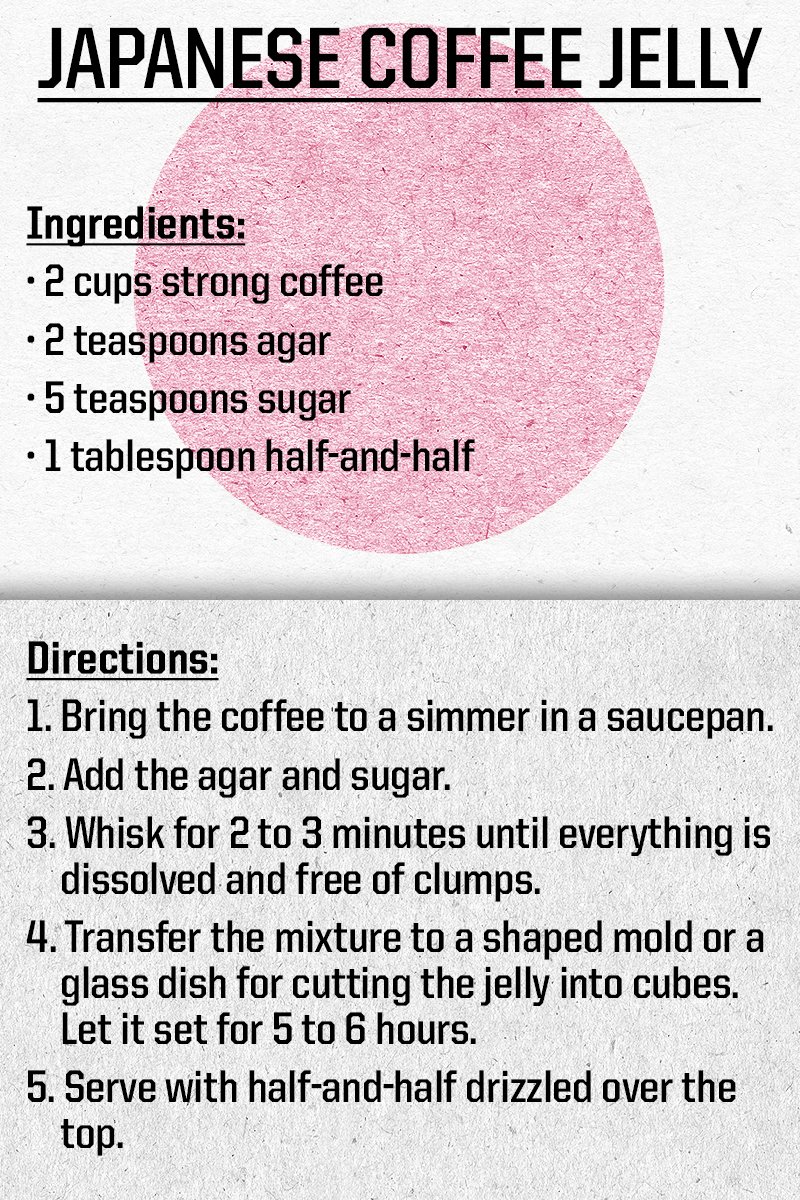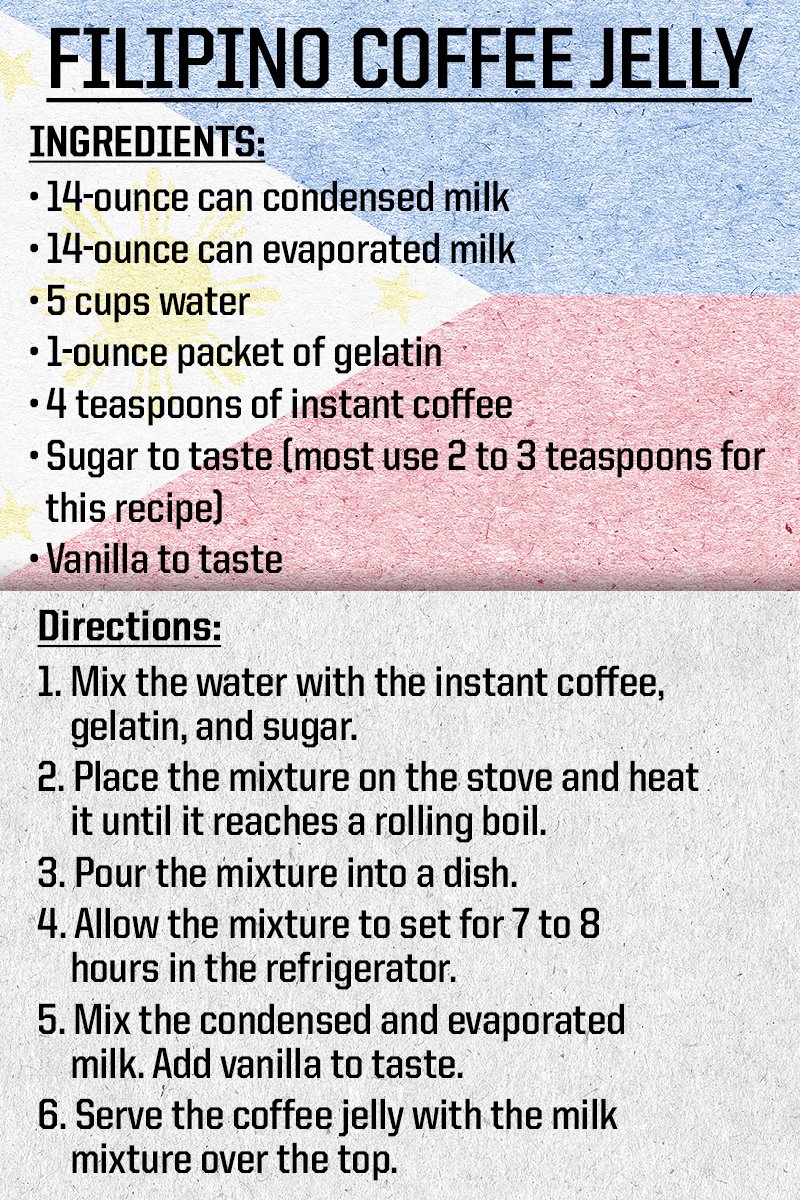
Coffee jelly is a popular gelatin dessert in Japan. Photo by Lombroso via Wikimedia Commons.
Many of us are accustomed to dunking our favorite cookies in a steaming cup of black coffee or ordering a cappuccino alongside dessert, but what about coffee as a dessert? We’re not talking about Frappuccinos or tiramisu — the best way to enjoy the true taste of coffee as a sweet treat has always been coffee jelly.
Coffee jelly is exactly what it sounds like: a light, bouncy treat crafted from coffee, sweetened with a hint of sugar, and thickened and set with a stabilizer. Unlike baked goods or other desserts that use dairy or additional flavoring, coffee jelly has always been a means to let the true flavor of coffee shine through. While the treat perches in the window displays of high-end cafes in Japan, coffee jelly traveled a long way to achieve its Asian acclaim.
The dessert originated in England, where day-old coffee would be mixed with gelatin, spices, fish-based isinglass, or other collagen-based clarifiers to create a wobbly consistency. The recipe’s purpose was twofold: It not only created a viable dessert, but it was also an easy way to use up coffee left over from the commercial brewing methods employed by cafes. The earliest recipe dates back to 1817 when coffee and coffeehouse culture had settled into the British population, which often saw cafes employed as a hot spot for political gatherings and intellectual discussion or as a front for criminal activity.

Unfortunately, the coffee plants of Ceylon, one of England’s main coffee suppliers, were ravaged by a fungal infection in the 1860s, ruining the crop there. This eventually solidified tea’s place as the British drink of choice, but not before Britain’s widespread influence had begun coffee jelly’s journey across the globe. It would ultimately reach America, Japan, and even the Philippines.
America’s fascination with coffee jelly was concentrated in 19th- and 20th-century New England. Boston, in particular, proved to be key in revitalizing and distributing the dessert. Coffee saw its origins in American popularity shortly after the Boston Tea Party in 1773, when coffee became strongly associated with patriotism. A variety of cafes and coffeehouses cropped up in the Boston metropolitan area, including Durgin-Park in 1827, where coffee jelly was a menu mainstay, if not a bit of an obscure find, until the cafe’s closing in January 2019.
Though the story is contested, legend states that the chef who started serving the dish was trying to find a use for the end-of-the-day leftover pot of coffee. While serving day-old coffee would’ve been an atrocity, the chef followed an old British tradition: He boiled it down with gelatin and served it in cubes topped with whipped cream to avoid wasting the precious beverage.
Boston was far from the only American city indulging in coffee jelly. One 1836 issue of Lady’s Book, a magazine geared toward New York’s housewives, told women that a molded coffee jelly was an ideal dessert to impress a crowd. The dessert was likely concentrated in the Northeast because of one major influence: the Northeast’s gelatin industry. Plymouth Rock Gelatin patented its Phosphated Gelatin in 1889, with Charles Knox developing his New York-based Knox gelatin just a few years later in 1894.
With gelatin more accessible than ever before, the possibility had opened up for coffee jelly’s popularity to grow, especially because of a widespread belief at the time that gelatin aided digestion. Unfortunately, the dessert’s popularity never spread outside of New England. With Jell-O’s coffee flavor flopping in 1918, coffee jelly has been described as one of America’s lost cuisines. The dessert did, however, manage to secure its place across the seas in Asia.
Today, coffee jelly is such a widely loved dessert in Japan that it can be found literally around every corner. High-end cafes specializing in coffee sell their own versions of the dessert, but those who have visited Japan may remember seeing coffee jelly encased in a disposable plastic container with a foil lid, similar to a single-serving yogurt container, sold for roughly 250 yen (around $2.30) at most convenience stores.
The Japanese dessert’s origins are simple enough. Dutch traders introduced coffee to the Japanese around 1700, but it struggled to gain popularity because of its high acidity and bitter taste. However, during the Taisho period (1912 to 1926), World War I helped secure Western influence in Japan. It’s thought that Japanese coffee jelly first emerged then, when young men idolizing Western traditions would enjoy this bitter treat made to mimic the molded jellied desserts of Europe.
After World War II, coffee jelly became mainstream in 1963, when Kanasaka Keisuke introduced it under the banner “coffee you can eat” at Tokyo’s Mikado Coffee. The jiggly treat rapidly gained popularity and became a mainstay on the menu and a staple of the region, with many other cafes following in Mikado’s footsteps. Unlike Western iterations of coffee jelly, the Japanese version swapped gelatin for agar, an algae-based stabilizing substance found in red seaweed.
Many of us may recognize the ingredient in Japanese jellies from our local supermarket or even as the ingredient that gives petri dishes their gelatinous base layers. While gelatin is usually used for a softer result, agar yields a firmer jelly. For Japanese coffee jelly, coffee is typically mixed with powdered agar (also sold as kanten) and sugar and set. The dessert is then served with whipped cream, or even just a pack of creamer, to balance the sweetness of the jelly.
The last place with a notable, unique take on coffee jelly is the Philippines. With both a decent amount of European and Japanese influence, Filipino coffee jelly’s origins are shrouded, though the dish has been marked by a very Filipino twist: condensed milk. Since the Philippines was one of the top contributors to the coffee industry in the 1800s and has the climate to grow the four main coffee varieties, it’s no surprise that the country is a huge fan of the caffeinated beverage.
These days, many Filipinos opt for the convenience of instant coffee when making coffee jelly. This, along with a creamy condensed milk accompaniment, creates a chilled treat perfect for combating the blistering sun on a hot day. Because of the additional richness provided by the condensed milk, the coffee jelly in this recipe is made with gelatin, which is softer than agar-based jelly and will impart its flavors more easily, and with a tad less sugar, to really let the strong coffee flavors shine.
While most of us enjoy our coffee as a liquid rather than a solid, the dessert is known for preserving coffee’s flavor while creating a treat that isn’t overly sweet or rich. For those of us looking for something to do with that day-old pot of coffee or who have a few packets of instant coffee we want to get creative with, one of these coffee jelly recipes might be perfect.
Read Next: Keep It Simple, Stupid: A Robusta Coffee Bean Breakdown

BRCC and Bad Moon Print Press team up for an exclusive, limited-edition T-shirt design!
BRCC partners with Team Room Design for an exclusive T-shirt release!
Thirty Seconds Out has partnered with BRCC for an exclusive shirt design invoking the God of Winter.
Lucas O'Hara of Grizzly Forge has teamed up with BRCC for a badass, exclusive Shirt Club T-shirt design featuring his most popular knife and tiomahawk.
Coffee or Die sits down with one of the graphic designers behind Black Rifle Coffee's signature look and vibe.
Biden will award the Medal of Honor to a Vietnam War Army helicopter pilot who risked his life to save a reconnaissance team from almost certain death.
Ever wonder how much Jack Mandaville would f*ck sh*t up if he went back in time? The American Revolution didn't even see him coming.
A nearly 200-year-old West Point time capsule that at first appeared to yield little more than dust contains hidden treasure, the US Military Academy said.















